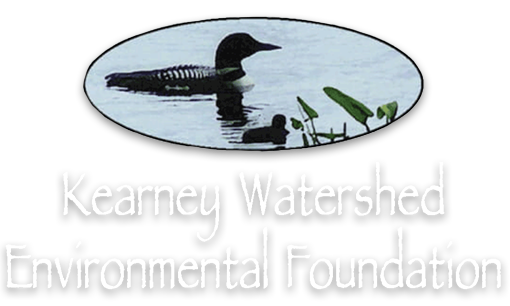December 2023 Newsletter
https://bit.ly/KWEFDec2023Newsletter
Included in this issue:
Pharmaceuticals and Personal Care Products in Water
Species at Risk
Ice Safety
Pharmaceuticals and Personal Care Products in Water
Pharmaceuticals, drug residuals and personal care products have been documented in surface, ground and drinking water and there is mounting evidence that these chemicals may pose some serious health and environmental risks. There are over nine thousand different types of drugs and personal care products registered for use in Canada. Pharmaceuticals, typically designed to dissolve, but are not readily digested, which contributes to their ability to persist in the environment, effecting the natural ecosystem, especially when they are combined with other drugs and chemicals in the environment. Research has found evidence of a variety of drugs including antibiotics, anticancer agents, blood lipid regulators, anticonvulsants, analgesics, psychiatric drugs and anti-inflammatory compounds in the natural environment.
Drugs and personal care products enter the environment in a variety of ways including sewage, landfills, runoff and wind-borne drift. Most drugs or their metabolites are excreted or discarded into sewage treatment systems or septic systems, which are the primary sources of release into the natural ecosystem. Many products are degraded by the conventional sewage treatment process; however, some are very persistent and remain unaffected or are only partly removed.
Other forms of drug pollution can occur when unwanted pharmaceuticals or personal care products are discarded into landfill sites or from the excrement of domestic animals that have been fed steroids and antibiotics. These drug compounds can leach into the soil and contaminate both surface and ground water.
Studies have shown that fish living downstream from municipal treatment plants can demonstrate altered physiology, changed behaviour, reproductive abnormalities and evidence of endocrine system disruption. Biologically specific substances such as endocrine disrupters (e.g., the birth control pill) are not broken down by the sewage treatment process and are active at low doses. Researchers have discovered male fish with reduced reproduction levels, reduced growth, changes in mating behaviour and feminization.
Some drug compounds have been found to settle into the aquatic sediment where they are taken up by plant life and pose the risk of becoming accumulative in the food chain.
As surface and groundwater are the sources for drinking water, it is no surprise that traces of some compounds have been found in very low levels in treated drinking water. Most of these drugs are removed by activated carbon or ozonation; however, others can persist. Untreated drinking water such as that from a personal well is more vulnerable to contamination unless household treatment mechanisms are in place.
The proper disposal of drugs and personal care products to minimize their potential for reaching the natural ecosystem is crucial.
What You Can Do
Never dispose of medications in the sink, toilet or garbage. Instead, return unused and expired prescription and over-the-counter drugs to your pharmacy for proper disposal. Pharmaceuticals may also be taken to a Household Hazardous Waste Depot for proper disposal.
Eliminate any unnecessary use of toiletries, cosmetics and drugs.
Eat organic foods to reduce your intake of hormones and antibiotics.
Source: Muskoka Watershed Council
Species at Risk
There are 35 Species at Risk in Parry Sound-Muskoka
Why are these species at risk?
Habitat loss (wetlands filled in, forests cut, grasslands ploughed and fenced)
Habitat fragmentation (roads, development)
Competition from other invasive and introduced species
Disease
Predation
Pollution & chemicals
Traffic mortality
Illegal/over hunting
How you can help
Observe from a distance – especially during breeding season
Keep your wetlands
Plant native species
Avoid using chemicals and pesticides, which leak into ground water
Maintain your septic system
Create a buffer along your shoreline with native plants
Build docks that minimize impacts to the shoreline
When boating, keep wake to a minimum near shore
Do not drive ATV’s or snowmobiles through sensitive habitat
Source: Muskoka Watershed Council
Ice Safety
Although there is a nice skiff of snow covering many of our lakes, the ice underneath is very thin and unsafe.
Please keep off the ice – no ice is 100% safe
Pets can be vulnerable as well; often we let them out to wander our properties and the next thing we know they are on the lake! Practice ice safety by keeping your pet in sight or on leash at all times; keep them away from all bodies of water and ice. The thickness of the ice can be deceiving and there are weak areas that can give way at any moment.


